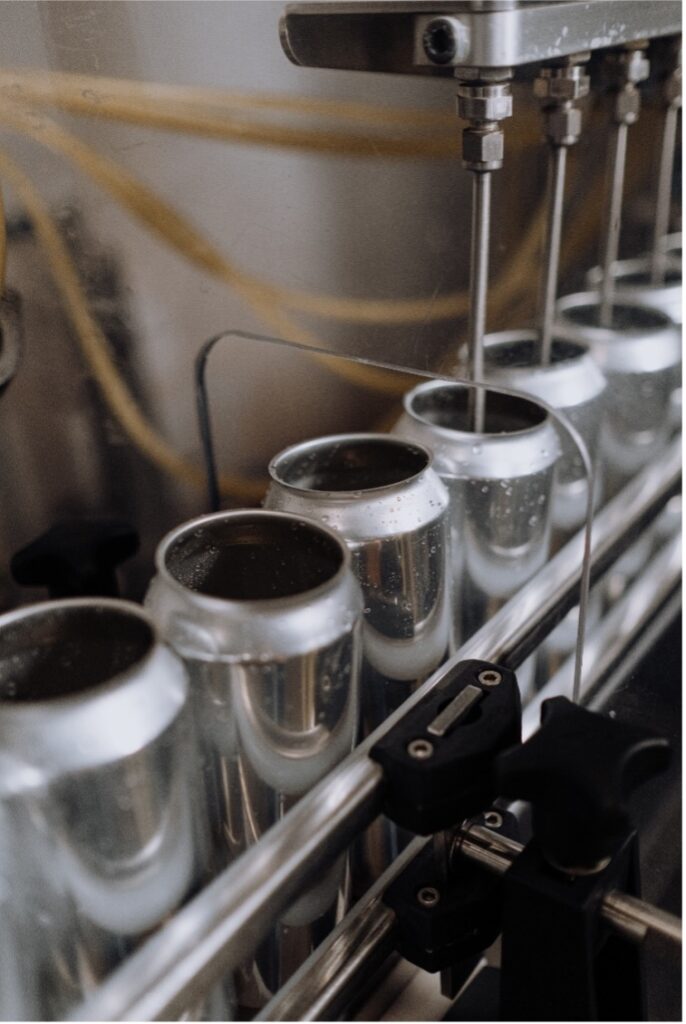ISO and rapid prototyping are crucial tools for competitive manufacturing. They help define processes, pinpoint problems, and prevent oversights. Use both to ensure top-quality outcomes and industry-standard fabrication. Here is what you should know to take advantage of.
ISO and rapid prototyping (RP) are closely related, and every manufacturer should be thankful. Specific industry regulations help keep everybody on the same page. This fosters more innovation, reduces waste, and shortens lead times. RP under ISO means a sharper competitive edge and higher-quality products.
What does ISO say about rapid prototyping techniques, materials, and outcomes? Are there particular methodologies you shouldn’t use? How do you know when your designs meet or exceed industry standards? This article will answer those questions.
We’ll define what ISO is and explore its primary applications. Then we’ll examine the seven mandatory ISO clauses to determine how each relates to rapid prototyping. Let’s get started.
Table of Contents
ISO and Rapid Prototyping: What You Need to Know
The Key Requirements for Rapid Prototyping with ISO
Making the Most of ISO and Rapid Prototyping
Why ISO Certification Is Crucial for Rapid Prototyping
What Is ISO?
ISO stands for International Organization for Standardization. It regulates the fabrication, manufacture, assembly, and distribution of synthetic goods. Depending on the industry, some standards could cover emissions, safety, quality requirements, and other concerns. Think of ISO as a formula to help guide production and keep our economy thriving.
“People in all sectors rely on ISO to tell them which direction to head during every product development phase.“
Using the standards encourages positive feedback and meaningful interactions with other manufacturers, stakeholders, vendors, and regulators. ISO also demonstrates expertise to buyers, consumers, trade associations, and investors.

We offer fast, high-quality, tailored PROTOTYPING solutions for leading companies in a wide range of industries.
superior Rapid PROTOTYPING
ISO and rapid prototyping are closely related because RP requires strict adherence to fundamental principles. Meanwhile, industry leaders determine the criteria, create the processes, and oversee implementation. This collaborative approach is mutually beneficial. Because rapid prototyping uses multiple sophisticated technologies, following the agreed-upon standard is essential.
Teams can waste precious resources developing a product only to discover that their designs don’t satisfy industry demands or expectations. Rapid prototyping is supposed to help streamline production, troubleshoot flaws, and improve existing products. All of those goals would be impossible without ISO definitions and support.
Common ISO Standards
ISO and rapid prototyping might be related, but some key differences exist. For one, ISO is a set of standards, and RP is a product development technique. The regulations for rapid prototyping are only a tiny fraction of the International Organization for Standardization.
ISO regulates every global industry’s innovation, from fabrication and manufacturing to model-making and drafting. These are some of the most commonly used ISO standards for rapid prototyping and other processes:
- Quality Management Systems (QMS) – This helps reduce product failures.
- Health and Safety Checks – This ensures minimal accidents, contamination, and liabilities.
- Environmental Regulations – This decreases the ecological impacts of manufacturing.
- IT Security Measures – This helps secure sensitive data and private information.
- Energy Management – This cuts energy consumption to maximize resources.
“ISO and rapid prototyping can work together to ensure optimal sustainability, top quality, and timely distribution.”
Talk to an RP expert for more information about implementing industry standards for the best results.
What Is ISO Used For?
Teams can use ISO for multiple purposes, including quality management and sustainable manufacturing. ISO applications are also suitable for rapid prototyping, additive manufacturing, 3D printing, and other advanced or customized techniques.
The International Organization for Standardization promotes continual growth through guided excellence and objective analysis. Standards enable product developers to measure, evaluate, and enhance designs before mass production. Aligning ISO and rapid prototyping gives reliable, consistent, and industrially acceptable outcomes. Then teams can implement the final blueprint using intuitive CAD software and automated machining.
ISO operates as an independent organization with no governmental ties. That means innovators can explore rapid prototyping capabilities within pre-set boundaries that support conformity but promote creativity. The standards are in place to regulate safety, efficiency, and practicality based on specific metrics, systems, and norms.
Many different ISO certifications exist for competitive manufacturers. Take ISO 9001:2015 and AS9100, for example. Both provide similar fabrication insights and comprehensive product design guidelines tailored to industry expectations. However, ISO 9001:2015 focuses on quality management systems overall. Meanwhile, AS9100 is set up for aviation, aerospace, and national or international defense projects.
DID YOU KNOW: ISO 9000 and ISO 9001 have different manufacturing efficiency standards and design dimensions?
ISO 9000 vs. ISO 9001
Understanding the difference between various ISO standards is essential.
“ISO and rapid prototyping can only work seamlessly when teams use clearly defined and internationally recognized criteria.”
Two of the most commonly used are ISO 9000 and ISO 9001. Remember that the “2015” attached denotes the standard’s latest update.
ISO 9000 is recognized internationally as the guide for setting up, maintaining, and evaluating quality management systems. Its primary purpose is to ensure efficiency in alignment with the designer’s intent. This regulation helps teams guarantee customer satisfaction without compromising product quality, fidelity, or integrity.
Although in the same family, ISO 9001 is different. This certification demands specific measuring gates and future compliance with fabrication trends. Teams can use it to ensure long-term product quality and relevance regardless of evolving market conditions and consumer demands.
Both ISO 9000 and ISO 9001 require accurate data, well-tuned equipment, and durable tools. Implementing either also needs experienced talent to understand, monitor, and translate the standards. Discuss the specific clauses of each ISO criteria with your team to avoid mishaps and mistakes.
The Seven ISO Clauses
“ISO and rapid prototyping use two unique approaches to come to the same conclusion.”
The reason is that they both comply with particular clauses that help shield projects from oversights. Teams use rapid prototyping to test ideas and troubleshoot errors. However, teams can also use ISO standards to double-check existing performance and create new inventories without similar flaws.
Likewise, ISO and rapid prototyping require accuracy, efficiency, and clarity. People use RP to conserve resources and save time. ISO gives pause for accountability. Therefore, each ISO type features unique clauses for the respective industry and intent. ISO 9001, for instance, states that manufacturers must provide terms and definitions, information on project scope, and normative references before initiation. Those standards might not be appropriate for every industry.
Here are the seven clauses required for accurate and efficient rapid prototyping and manufacturing, according to relevant ISO standards:
#1. Context
Context regulations expect teams to determine the framework of their designs. Where will the parts be implemented, and how will they work? Which industries will use the products, and are they safe for consumers?
#2. Leadership
Leadership standards require manufacturers to define the project’s hierarchy. Who is in charge of the decision-making process, and how do you contact them? Which entities are liable for design mistakes and potential recalls?
#3. Planning
Planning strategies help define the necessary steps for designing, fabricating, manufacturing, and distributing products. How will teams go from point A to point B, and what are the predicted hiccups? Do you have a contingency plan for unforeseen problems?
#4. Support
Support standards delegate your plan B methodologies to ensure error-free outcomes. What happens when your original schemes break down? How does your team intend to fix problems before they get out of hand?
#5. Operation
Operational ISO standardizes the processes used to innovate or mass-produce designs. Will you use ISO and rapid prototyping or skip model-making altogether? Which tools, machines, and materials are on your must-have list?
#6. Evaluation
ISO evaluations comb your prototype to catch missed issues and ensure standards compliance. Did your team forget a vital component, and if so, what’s the best way to reintegrate it? Does the final product meet or exceed expectations?
#7. Improvement
ISO improvement standards give teams clear and concise instructions for product enhancements. What can operators do to improve the final product or make it more functional? How can new measures be implemented without scrapping or compromising the original?
Using ISO and RP helps remove unnecessary hurdles and clears away obstacles between productivity and profitability.The two measures combined can streamline metal fabrication, enhance CNC machining, bolster large-scale manufacturing, and protect industry rapport.
ISO and Rapid Prototyping: What You Need to Know
Where traditional manufacturing methods fail, ISO and rapid prototyping pick up the slack. Conventional techniques often leave room for human error and inconsistencies. Yet, ISO and rapid prototyping remove those liabilities. They use a structured approach and standardized methodologies to guide innovation and support connected economies.
Furthermore, ISO and rapid prototyping play off of each other. One (RP) allows teams to try new things within specific parameters. It gives tools and techniques to visualize data in a three-dimensional format. Meanwhile, ISO provides those necessary limitations, restrictions, suggestions, and instructions to take a concept to reality.
Rapid prototyping is a quick and efficient technique to create scale models of different components. It offers tremendous freedom for innovation and creativity. However, teams can get carried away with designs that don’t work if they ignore the relevant ISO standards.
ISO and rapid prototyping should work together to foster better collaboration. Engineers can benefit from straightforward communication and uniform documentation to develop higher-quality products in less time and for less money. From CAD-assisted model-making and rigorous evaluations to design conversions and manufacturing, ISO and rapid prototyping are co-dependent.
DID YOU KNOW: The three fabrication classes are additive, subtractive, and compressive. ISO helps regulate each.

We offer fast, high-quality, tailored PROTOTYPING solutions for leading companies in a wide range of industries.
superior Rapid PROTOTYPING

We offer fast, high-quality, tailored PROTOTYPING solutions for leading companies in a wide range of industries.
superior Rapid PROTOTYPING
The Key Requirements for Rapid Prototyping with ISO
Using ISO and rapid prototyping to refine projects can be tricky without professional help. There are multiple steps and several requirements that teams cannot ignore. Here are the binding obligations for rapid prototyping with ISO:
- Prototypes must go through all relevant production stages to comply with ISO standards.
- Product fidelity and intent do not excuse designs from ISO evaluations.
- Teams must define a design’s purpose to determine the appropriate ISO instructions.
- The product’s features are of top priority when checking ISO compliance.
- Production and distribution plans are also subject to regulatory ISO expectations.
- Use rapid prototyping to support intuitive product testing and presentation.
- Check for relevant ISO policy updates to stay ahead of the curve.
- Discuss your options, observations, and obstacles with the appropriate teams.
Each project is different, with unique problems and goals. However, ISO and rapid prototyping are static and predictable. While ISO regulations continually update and RP becomes more advanced, the fundamentals never change. ISO and rapid prototyping will usher in a new era of high-quality, fast-paced manufacturing for a global marketplace.
Making the Most of ISO and Rapid Prototyping
What does ISO say about rapid prototyping when your original design is already compliant? It states that changes require a complete ISO checkup to ensure seamless integration. That means you can have an approved component but still need an evaluation to mitigate potential risks. Make the most of your efforts and resources by working with an ISO-certified expert.
Why ISO Certification Is Crucial for Rapid Prototyping
ISO certificates demonstrate a manufacturer’s commitment to consistent quality and conformity. They help assuage worries about non-compliance and industry rejection. Not all markets require an ISO certification for prototyping, fabrication, or distribution. However, international industries are less likely to use your design if it lacks ISO compliance.
Conclusion
ISO and rapid prototyping are related in multiple ways. They are often used side-by-side to ensure top-quality manufacturing outcomes and adherence to industry standards. Teams can use RP to create innovative scale models of new concepts. Then they can check the designs using ISO guidelines and relevant regulations to lead the competition for the long term.
Help define project processes, materials, and expectations with ISO and RP. Utilize them together for efficient innovation, examination, and display. Achieve optimal manufacturing outcomes with ISO and RP as your foundation.
 About the Author
About the Author
James Murphy is the founder and CEO of HLH Rapid – a hybrid CNC machine shop fusing Western service and quality with Eurasian industry influences for over 14 years. His advanced enterprise uncovers cost-effective rapid injection molding techniques to remain unmatched by industry competitors. Murphy’s full-service fabrication and manufacturing methods span six dedicated zones, from 3D printing and vacuum casting to sheet metal prototyping and project management. His expertise also includes high-efficiency machining within strict yet volatile markets.
Murphy earned an MBA after becoming inspired by his father’s hands-on craftsmanship. As a budding entrepreneur, he taught English and studied Chinese to pursue pioneering objectives. His groundbreaking approach helps build the future by providing well-rounded manufacturing services to innovative Western businesses. When he’s not offering upscale RP and CNC, James enjoys art-house movies, Thai boxing, and spending time with his growing family.
Visit HLHRapid.com for an instant quote on rapid prototyping services.


